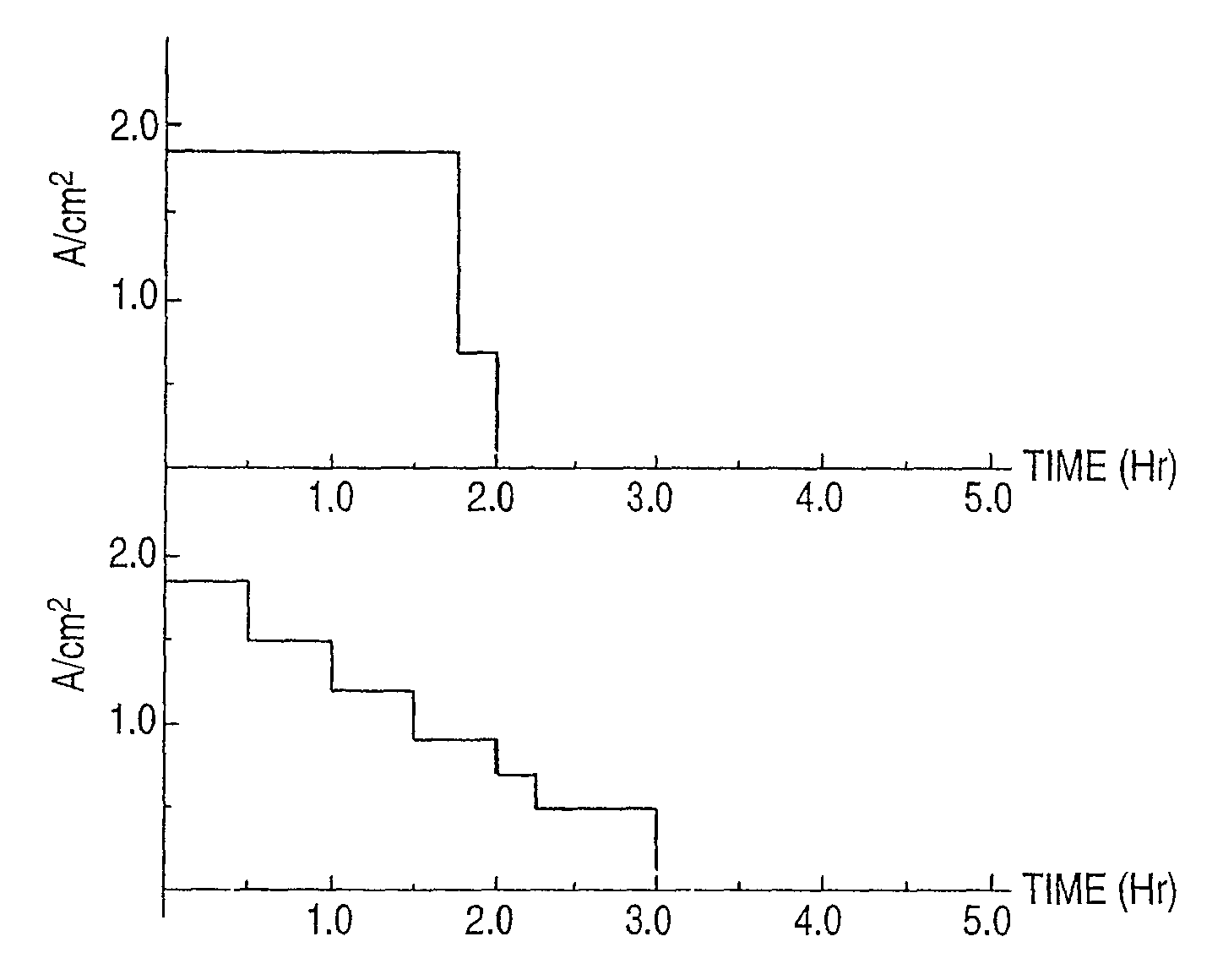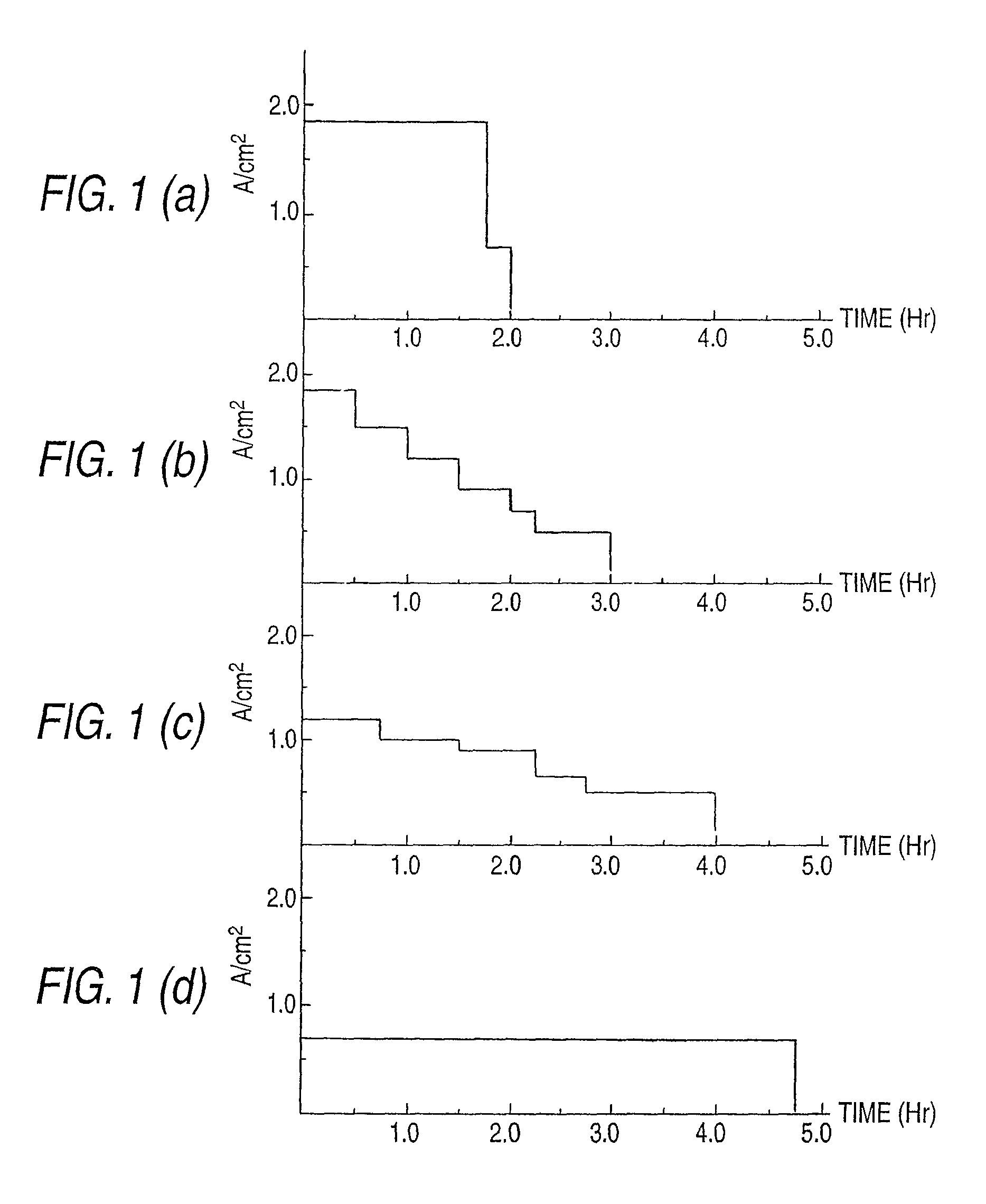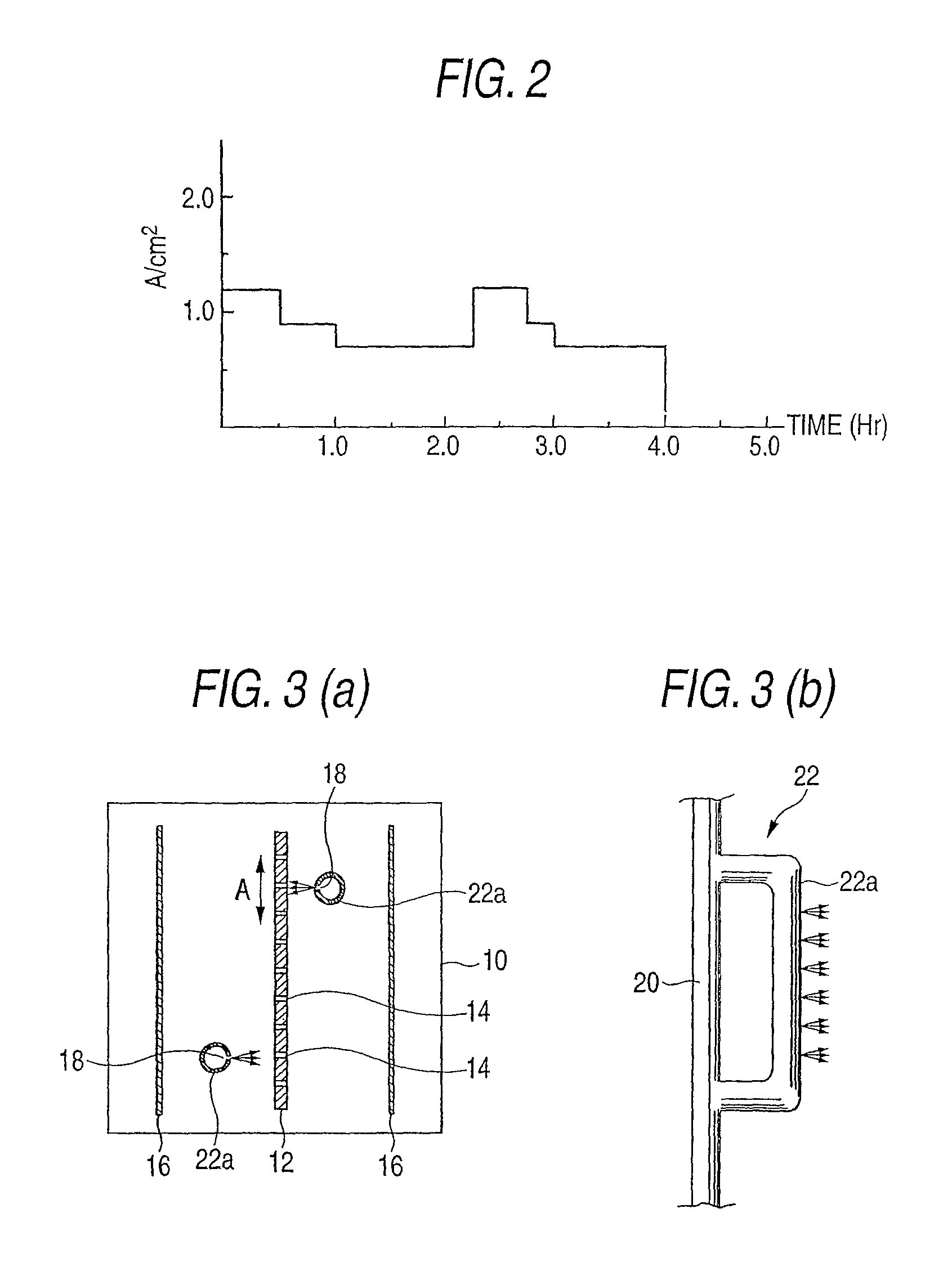Method for filling through hole
a technology of through hole and plated metal, which is applied in the direction of printed circuits, electrical devices, printed circuit aspects, etc., can solve the problems of difficult industrial use of the method of filling through hole with plated metal by such electrolytic plating, and the difficulty of delicate control of time and timing, so as to achieve the effect of reducing the time taken to complete the filling of the through hole with plated metal and being easy to use industrially
- Summary
- Abstract
- Description
- Claims
- Application Information
AI Technical Summary
Benefits of technology
Problems solved by technology
Method used
Image
Examples
Embodiment Construction
In the invention, it is necessary to start electrolytic plating by a high current density higher than Constant Current Density capable of fully filling a through hole when the electrolytic plating is performed with a current density held constant.
It is preferable that this Constant Current Density should be a current density in consideration of variations in the inside diameter etc. when plural through holes with the same diameter are formed in a substrate.
Also, it is preferable to adopt a high current density at which an initial value of throwing power represented by a ratio [(tin / tout)×100] between a thickness (tin) of a plated metal layer formed on an inner wall surface of a through hole and a thickness (tout) of a plated metal layer formed on a substrate surface in which this through hole is opened becomes 90% or more as the high current density higher than such Constant Current Density. In electrolytic plating of such a high current density, from the beginning of a start of the...
PUM
 Login to View More
Login to View More Abstract
Description
Claims
Application Information
 Login to View More
Login to View More - R&D
- Intellectual Property
- Life Sciences
- Materials
- Tech Scout
- Unparalleled Data Quality
- Higher Quality Content
- 60% Fewer Hallucinations
Browse by: Latest US Patents, China's latest patents, Technical Efficacy Thesaurus, Application Domain, Technology Topic, Popular Technical Reports.
© 2025 PatSnap. All rights reserved.Legal|Privacy policy|Modern Slavery Act Transparency Statement|Sitemap|About US| Contact US: help@patsnap.com



